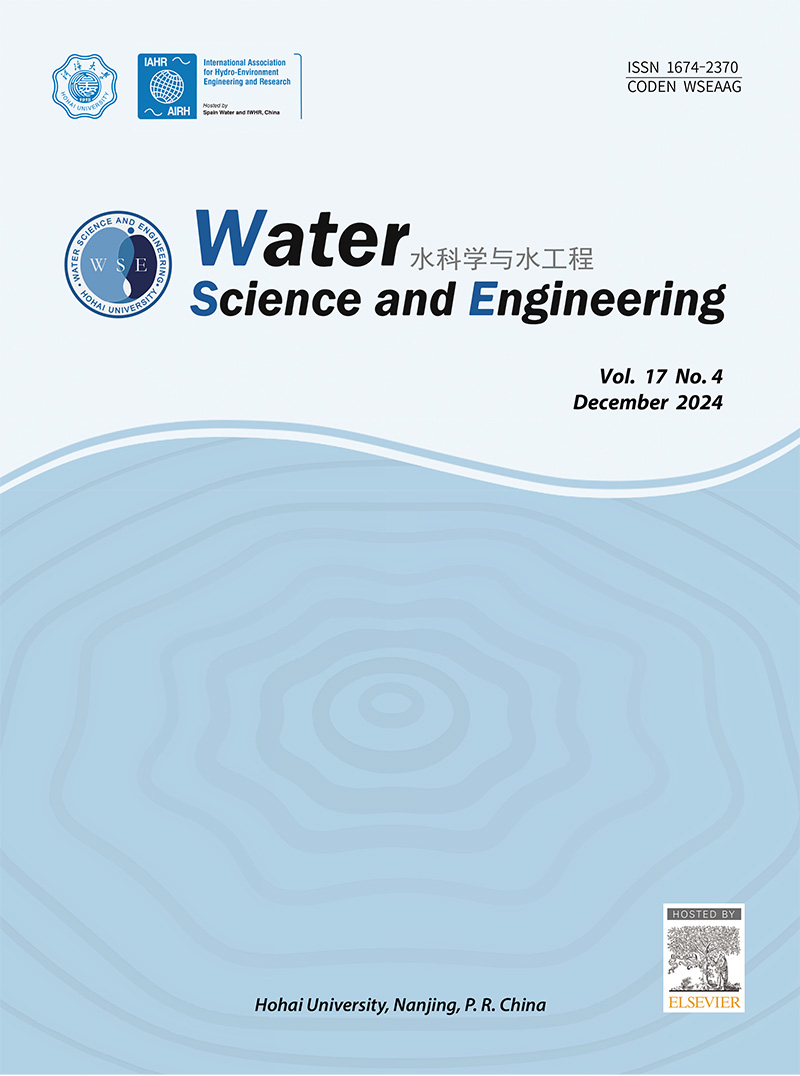A novel approach for quantifying upper reservoir leakage
IF 4.3
Q1 WATER RESOURCES
引用次数: 0
Abstract
During the operational phases of the upper reservoir in a pumped storage power station, the water level, leakage area, and hydraulic gradient of the upper reservoir alter dynamically due to the cyclic pumping and draining activities. The rising groundwater level during storage introduces distinct leakage conditions within the reservoir basin, characterized by unsaturated, partially saturated, and saturated states. Consequently, reservoir basin leakage exhibits variability across these states. To address this issue, this study formulated rational assumptions corresponding to the three leakage states in a reservoir basin and derived analytical expressions for seepage calculation based on Darcy's law and the principles governing groundwater flow refraction. A case study was conducted to investigate the relationship between various factors and leakage. The results showed that leakage primarily depended on the permeability of the impermeable layer in the reservoir basin. The upper reservoir leakage was estimated, and the calculated leakage generally agreed with the measurements, offering insights into the leakage mechanism of the Liyang pumped storage power station. In addition, the reasons for disparities between measured and calculated leakage were analyzed, and the reliability of the developed method was validated. The findings of this study provide a foundation for the seepage control design of upstream reservoirs in similar projects.
量化上层储层渗漏的新方法
在抽水蓄能电站的上水库运行阶段,由于循环抽水和排水活动,上水库的水位、渗漏面积和水力坡度会发生动态变化。蓄水期间地下水位的上升会在水库流域内引入不同的渗漏条件,其特征为非饱和、部分饱和和饱和状态。因此,水库流域的渗漏在这些状态下表现出差异性。为解决这一问题,本研究根据达西定律和地下水流折射原理,提出了与水库流域三种渗漏状态相对应的合理假设,并推导出渗流计算的分析表达式。通过案例研究,探讨了各种因素与渗漏之间的关系。结果表明,渗漏主要取决于水库盆地不透水层的渗透性。对水库上部的渗漏量进行了估算,计算出的渗漏量与测量值基本吻合,为溧阳抽水蓄能电站的渗漏机理提供了启示。此外,还分析了实测渗漏量与计算渗漏量不一致的原因,验证了所开发方法的可靠性。研究结果为类似工程上游水库的防渗设计提供了依据。
本文章由计算机程序翻译,如有差异,请以英文原文为准。
求助全文
约1分钟内获得全文
求助全文
来源期刊

Water science and engineering
WATER RESOURCES-
CiteScore
6.60
自引率
5.00%
发文量
573
审稿时长
50 weeks
期刊介绍:
Water Science and Engineering journal is an international, peer-reviewed research publication covering new concepts, theories, methods, and techniques related to water issues. The journal aims to publish research that helps advance the theoretical and practical understanding of water resources, aquatic environment, aquatic ecology, and water engineering, with emphases placed on the innovation and applicability of science and technology in large-scale hydropower project construction, large river and lake regulation, inter-basin water transfer, hydroelectric energy development, ecological restoration, the development of new materials, and sustainable utilization of water resources.
 求助内容:
求助内容: 应助结果提醒方式:
应助结果提醒方式:


